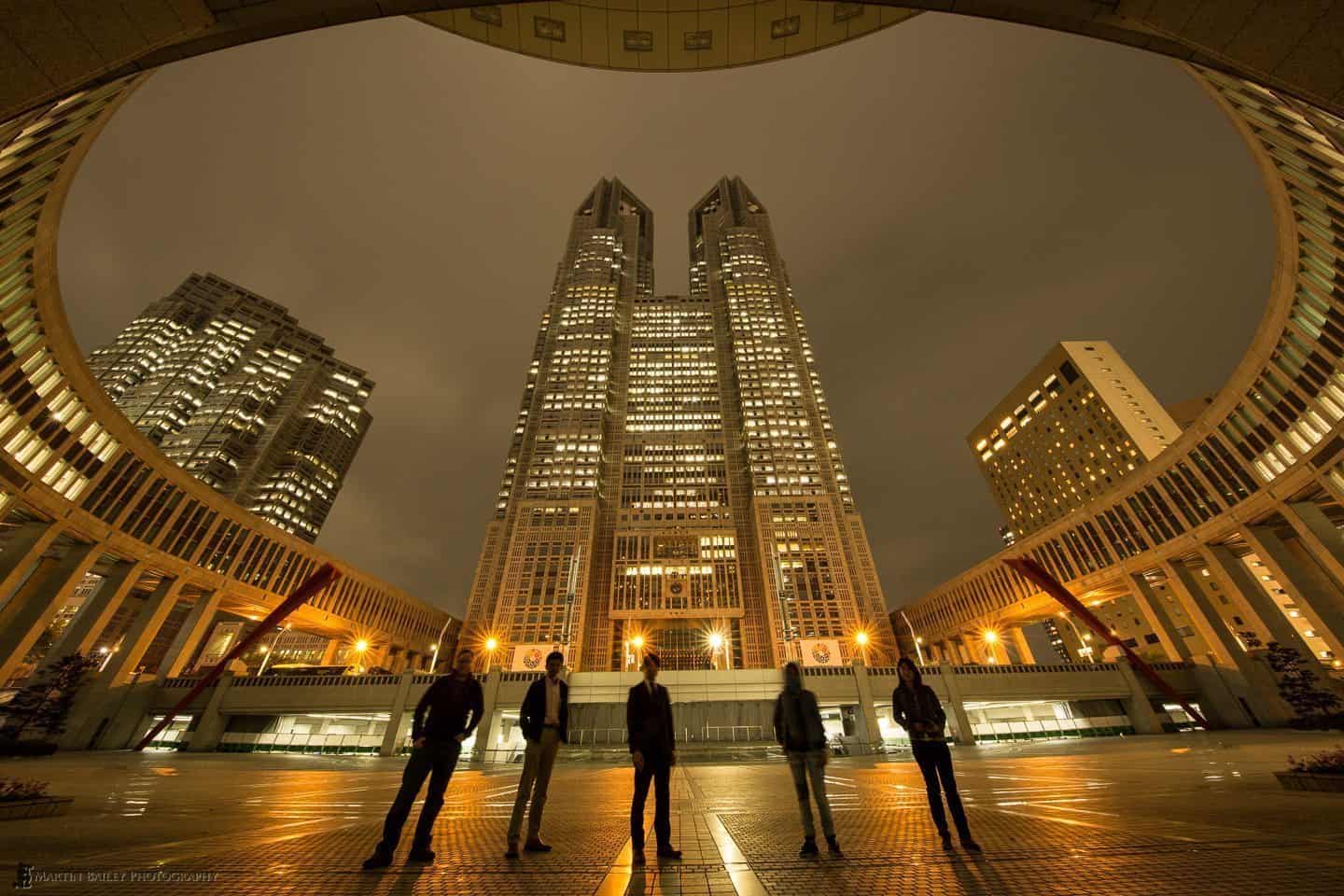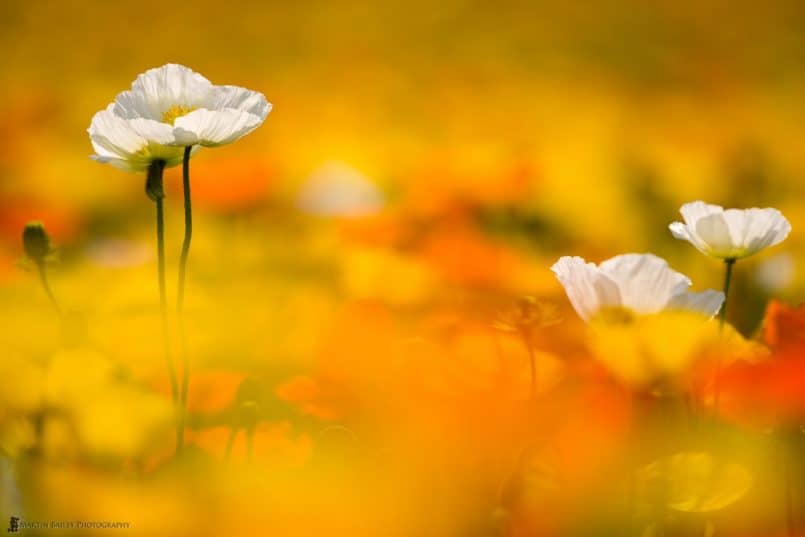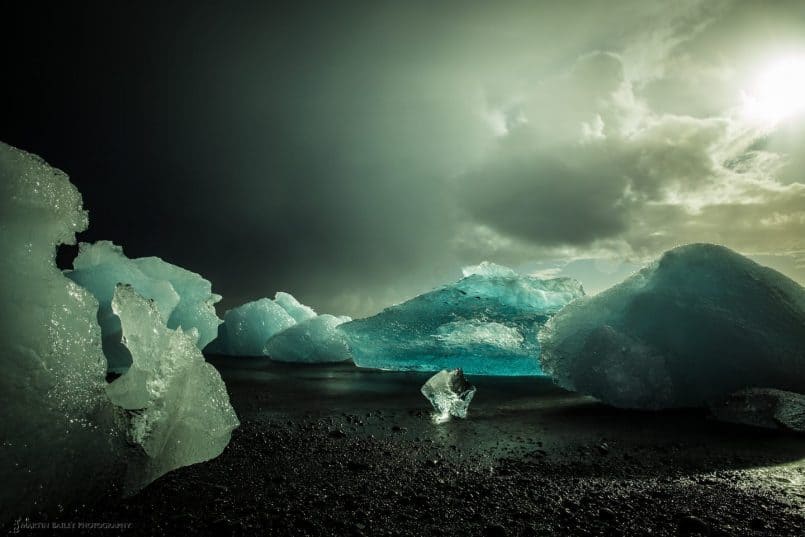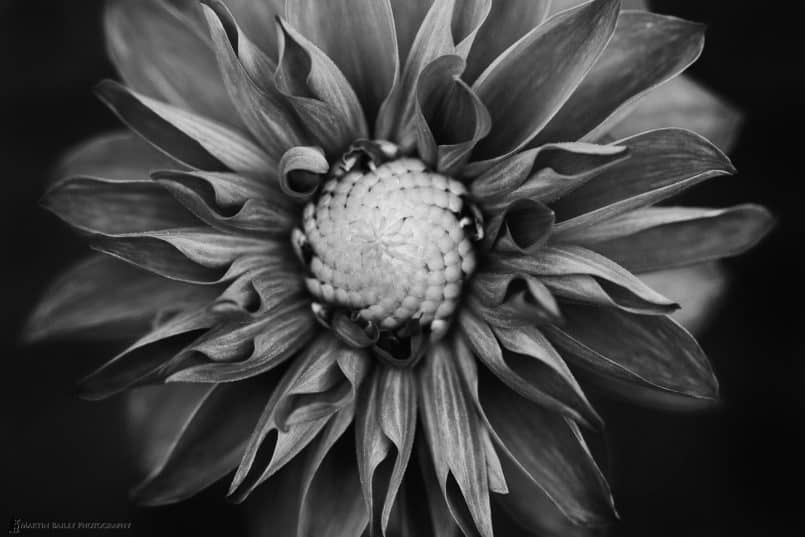Today we’re going to explore a number of topics that have been plaguing artists for centuries, and will probably continue to plague us for a few more millennia at least—how to become and stay creative, finding your artistic genre and developing a style.
We all, at some point, find it difficult to pick up the camera and start to do what we love to do. Despite having a passion for photography, or any other creative pursuit for that matter, we sometimes lack inspiration or momentum to actually create, or create to the quality or aesthetic level that we hope for our work.
One of my students in The Arcanum recently mentioned that he was having trouble “finding his muse”. My answer to this in brief was that any time you spend searching for your muse is wasted, because she’ll come when she’s good and ready, and not a moment before. But if you just sit around waiting for your muse to show up, you could have a long wait on your hands.
Create to be Creative
Five years ago, in episode 244, I talked about Creation Breeding Creativity. I’d been frustrated, because I wanted to go out and do some work, but was feeling uninspired, and it was at that point that I realized that the best way to get out of a creative slump, is to start creating.
Literally, right up until the point that I raised the camera to my eye, and actually started to frame up some shots and work the scene in front of me, I’d felt deflated and not really interested in creating anything at that time. Once I started to shoot though, actually being creative, before I knew it, the muse was by my side, leading my thoughts and refining my ideas. On that occasion, as is quite often the case, my compositions tightened and it all started to come together, but it doesn’t always work like that. The higher you set your sites, the more difficult it can be to achieve your goals.
The Taste Gap
It’s not really fair on the muse though, to expect her to complete your work for you once she’s turned up to lend a hand. Sometimes we start to understand what it is that we want to create, but there are a lot of things that factor in to how easy it will be for us to reach those goals.
If you have not been doing photography for very long, you might lack a technical understanding of how to achieve the results we’re hoping to create. If that’s the case, it’s important to develop the ability to either investigate or at least take a good guess at how you can achieve a certain look. Even as you become more experienced, sometimes you might have a killer idea, but just cannot figure out how to pull it together.
As Ira Glass points out in one of his talks about about storytelling, there is often a gap between what we can conceive and what we are able to create. He says that you get into creative work because you have good “taste” but for the first couple of years of making stuff, what you are making isn’t that great. There’s a gap between what you want to create driven by your taste and what you are actually capable of creating at that point in time.
I’m paraphrasing, but he goes on to say that it’s such a shame, but many people stop at that point, and give in. To get past that phase though, and to start to create work that matches your taste, you have to do a huge volume of work. What we often don’t realize here though, is that it’s perfectly normal for this to take a while. We have to fight through this phase.
There are No Shortcuts
You have to keep on reiterating on your ideas, refining the results with each iteration. The more you do something, the better you become at doing it. It can take years to get to the point where you can really make what you had envisioned, whether the muse is by your side, or on top of her cloud sipping a cocktail while watching you squirm.
Never in history has it been so easy to gain information and advice on how to reach our goals. The last 20 years have revolutionized how we study new pursuits. It’s common now to just pick up a device or open a browser and search for just about any knowledge that we require, and the chances are that someone has already taken the time to put the information you are looking for into a post of some sort. Maybe that’s how you will end up finding this post!
But just reading about a certain skill or technique will not make you a master at it. You have to put in the work, and make it your own. That only comes through repetition. Doing stuff again and again. Over and over until it starts to become second nature. The culture of having everything at our fingertips can lead to the desire for shortcuts and quick-fixes, and that will lead to disappointment.
Case in Point
As a case in point, I’d like to explain the photograph that I used to illustrate today’s blog post. The photograph in itself has little to do with the topic, other than in that it came into being by me practicing what I’m preaching here. Last Friday, my wife was heading into Shinjuku here in Tokyo for an evening seminar, and I’d spent almost three full days doing maintenance on our Web site and cleaning up posts afterwards. I was feeling a bit deflated, and knew that the only thing that was going to pick me up, was a little shutter-therapy, so I decided to go with her.
Across from the building that my wife needed to visit is the Tokyo Metropolitan Government Building, or Tochou. In the past I’ve photographed the circular wall around the courtyard there with my 14mm prime lens, but I’d been left wanting to go a little wider, which of course my new 11-24mm lens from Canon enables me to do, so that’s what I took. My 5D Mark III, the 11-24mm lens and a tripod.
I’d been there about ten minutes, got the shots that I’d set out to get, but I felt that the scene needed a little something more. I was doing 30 second long exposures, so most of the human figures that walked through the scene were disappearing due to their movement. I had just started to think of going into the shot and standing there myself, or maybe sitting cross-legged in the foreground, when a few Google Plus friends arrived, totally by coincidence.
After having a bit of a chat, I asked them if they’d mind posing in the scene, so we did a couple of shots, still at 30 seconds, trying to keep as still as possible, and the result is this photo (below).
I had almost turned off, and given up on my idea to include a human figure. We’d been chatting for fifteen minutes when this idea popped into my head. We were starting to wind up the conversation and I started to think once again about sitting in the scene myself, and then I connected the dots, or my muse connected them for me. Either way, I absolutely love this photo, and wanted to use it to show that we have to keep doing what we do. It keeps us sharp, and open to the whispers of the muse, or whatever you’d like to call it.
Rinse and Repeat
It can take years still to get into a position where you will be able to repeat your new found skills and processes consistently, and during that time, as you grow as an artist, you’ll not only start to achieve the goals that you were able to perceive, but you’ll start to develop new sensitivities and tastes. You’ll come up with new, more ambitious ideas, and these put us right back into a very uncomfortable place, where things don’t flow as easily as they started to before, and the missing muse will make us lonely and desperate all over again.
The cool thing is, that the more you do this, the more confident you become in your process, and you’ll start to know that despite the failures and disappointment, you will eventually create what you’d been hoping for. You just have to do the work. Rinse and Repeat, until it all comes together, once again.
Passion Will Pull You Through
I think the most vulnerable time for any creative person comes in the years shortly after you’ve fallen in love with a particular form of creativity, be it photography, writing, oil painting or knitting. You can get very excited by the results of your early efforts, because you don’t realize at first that you are really just scratching the surface.
Once you become proficient enough to realize that there are greater things to move on to, that’s when you start to panic, and feel disappointed, but if you really have fallen for your new found passion, you will be able to do the work, and put in the time required, and it will lead to results. Armed with this information you will hopefully learn not to fear the failures. It’s all part of the process.
I’ve spoken to people almost desperate to get through these early phases, and I know that this can feel really bad, but really, if you love what you do so much that it can hurt that bad, you have the passion required to do the work, and make it through to where you will occasionally be able to close the Taste Gap, and create something that you are truly proud of.
Don’t Let the Muse Leave
The great thing about being really passionate about your craft is that it can help you to be prolific. And the more often you do this, the easier it is to maintain your state of flow. It’s as though you get to call the muse back before she really gets a chance to leave.
When I’m on my photography tours or multi-day projects, it’s always much easier to stay creative when you get up and do it every day. Sometimes you’re tired, and don’t necessarily feel like getting off the bus and starting to shoot again, but for both myself and the participants of my tours, we have a plan, and we arrive at a place. The options are get off the bus and start to do what we fundamentally love, or sit on the bus alone and watch everyone else leave to do what they love. What we love!
Needless to say the latter rarely happens, and the great thing about this is that as soon as the camera is raised to our eye, our creative juices start to flow again, and we often almost pick straight up where we left off the previous day. The technique, the creativity, it’s all right there. The muse didn’t get a chance to leave.
Having the Courage to Abandon Work
Sometimes though, as hard as we try, it doesn’t always come together as we’d hope. We just don’t see it. We know that we have to continue to work hard and it will kick back in, but what do we do with the crap that we make in the meantime?
As I mentioned in episode 438 on the Evolution of the Photographer, it’s important to understand when what you create is not worthy of public eyes. It takes a lot of courage and commitment to abandon something that you are emotionally invested in, not to mention financially, or your often lengthy time investment. I am a strong believer though, in us only being as good as the worst work we allow to represent us.
Sure, it’s OK to show less than stellar work as illustration, or when you are trying to solicit advice on how you can do better, but when you show something and say, this is my work, it’s what I do, such as in a portfolio, it should be the best that you can do at this point. Even if you hope to go on to create even better work, and you always should, just be sure that what you show others is really your best work right now.
Putting Your Stakes in the Ground
When I rented a gallery and did my first solo show at the end of 2010, I was basically putting my stake in the ground. I had high hopes for the work that I was still to make, and I still do, but I wanted to say “This is me, right now. This is the work that I was able to do while still employed in my old day job.”
At that time, of course, I was happy with the work. I was proud to show it! But at the same time, I knew that in a few years I’d look back and wonder why I included at least some of the work that I did, and I do. And that’s OK.
You have to believe in what you are going to become, but don’t let that stop you from putting your stake in the ground right now, as you create your stepping stone masterpieces. Each of these achievements is another step in our own personal evolution as an artist, and even if you look back later and cringe, it’s necessary to take us to the next level, and forms an important part of our personal history.
Finding Your Genre and Style
One fortunate byproduct of all the hard work that we put in to being creative and finding inspiration, is that being prolific also leads us to our photographic genre, and in turn helps us to start to develop our style. These are also areas in which people seem to get impatient, but I truly believe that just as the muse walks the other way when we sit around wishing she’d show up, the only way to find your genre or develop your style, is to shoot a lot.
Finding your genre is in many ways the easier of these two aspects of photography, because we are attracted to certain genres over others. And, we all only have a finite amount of time to dedicate to photography, so we prioritize that time according to our desires. If you have just three hours to head out with your camera for example, you’re going to think of your options, which might be to either head to the park to make some flower shots, call a model friend to do a quick studio session, or go into town to do some street work.
You can replace these examples with just about any other photographic genre of course. The point is that you’re going to prioritize your time in such a way that you’ll automatically gravitate towards the sort of work that you are most passionate about.
There is nothing stopping you pursuing multiple genres either. You may find that you love to use small pockets of time doing street photography, because you can do that closer to home, but when you get a full day or more you may head out into the hills to do some landscape or wildlife work. Multiple genres can coexist, and as time allows, I believe your photography will benefit as a whole by doing as many types of photography as you can. One discipline will feed and inform the others.
The Beginnings of Your Style
Even from within the genres you try your hand at though, you will find yourself prioritizing some types of photography over others, and this will lead you to hone in and specialize. You’ll start to build a body of work in a small number of genres. Once again, within those genres you’ll shoot more and more, and over time you’ll start to see some patterns form in how you work.
You’ll find yourself using certain settings, certain compositional and processing techniques over others. The more you shoot though, the more work you’ll produce, and then you’ll start to gravitate further still towards certain areas of photography and processing. These are the beginnings of your style developing, and what’s more, I believe it’s fine to have a number of sub-styles within your overall style.
Sub-Styles and Style Dilution
For example I love to use shallow depth of field in my Flowerscape images, but for my landscape work, I generally go for much deeper depth of field, often aiming to get the entire scene in focus. (See my post on Understanding Hyper-focal Distance.) I like to do long exposure landscapes, and quite often they are processed into black and white images.
How we process certain types of images adds to our style. I often create high contrast black and white images of my landscapes and even some flower photographs, but my Flowerscapes are generally left in glorious full color. If color is important in a landscape photograph I often use Color Efex Pro to enhance the color in the scene, but I pretty much never use it on my wildlife photography.
It’s definitely not just about processing and technique though. The more I shoot, I’m happy to hear from time to time that people can recognize my work, because of a common sensibility between all of my types of work. Be it a black and white flower, a full color landscape, or the look on the face of a philosophical snow monkey, people generally recognize my work, and that means I’m gradually establishing a style.
If you want to develop a recognized style, and be known for it quickly, you’d probably be more successful by sticking to just one style and one type of processing. I personally want to have more fun with my photography, so I work in a broader set of genres, but this really is up to the individual. It’s pretty safe to say though, that the more you dilute your styles, the longer it’s going to take for people to recognize them as yours.
What If I Can’t Find My Genre?
It’s quite common as people start to get into photography, to feel frustrated that you don’t really know what type of photography you’d like to pursue. If you simply have a love for photography, but don’t know what to do with it, just shoot anything and everything that you can. Really. Go crazy with it! Over time, you’ll gain a large enough mass of photographs in one genre over another, that gravity will kick in and pull you in a certain direction.
Your heart will lead you. You’ll find that some types of photography simply make you feel happier than others, but you might not learn which ones they are until you have spent some time working in a few different genres. It’s never been easier to learn of the possibilities though. We are surrounded by more photography today than in any other time in history. On the television, in magazines, and of course everywhere on the Internet.
There are sights like 500px, Instagram, flickr and many others where people share amazing photography every day. Go and take a look, and listen to those flutters of excitement in your heart as you see certain types of photography. Most sites have a way to Favorite images, and then display them in groups later. Use this, and you’ll see certain commonalities between the images that you select. This is where you’ll want to start.
If you need certain types of gear specific to the genres that excite you, try renting for a few trips before you go off and drop some real cash down for them. Try to confirm that you really want to invest your time in a genre before you invest any real money in it. Remember though, your initial results might not be as good as your taste will have you desire. If you know that you really want to pursue that genre and get good at it, you’ll have to put in the time required to close that gap, as we mentioned earlier.
Only You Can Be You!
One last thing that I’d like to encourage you to keep in mind as you gain your inspiration from the photography of others, is that you don’t have to try to be that person. It’s fine to emulate a look, to dissect the process and help you to learn your craft, but your final goal is to be you. Don’t try to be someone else. Everyone else is already out there doing what they do, probably better than you will. Only you can be you, so do it well, and be the best you that you can possibly be, even if it takes many years to really start to feel comfortable in yourself and your work.
Show Notes
Subscribe in iTunes for Enhanced Podcasts delivered automatically to your computer.
Download this Podcast in MP3 format (Audio Only).
Download this Podcast in Enhanced Podcast M4A format. This requires Apple iTunes or Quicktime to view/listen.








Thank you, Martin, for this thoughtful podcast. I am learning encaustic mixed media photographic techniques and there is a huge gap between what folks can conceive of aesthetically and what we can achieve at the beginning. Whether the scratchings on the surface will be worth it absolutely requires putting in the time and expense that sometimes I don’t want to give it. But, I love it, so I continue. You are right about many things in this podcast.
One of the most inspirational posts of your collection. Congratulations!!
Thanks Iratxo!